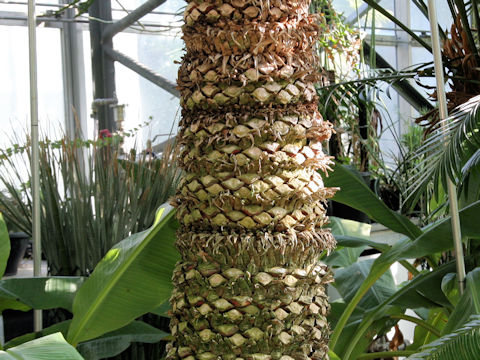 |












|

|
^CÌk©çChVi¼ÉªzµÄ¢Ü·BMÑ©çMÑnûÌWROO[gÈãÌRnɶ¦A³ÍPDT`R[gÙÇÉÈèÜ·B²ÌîÍìåµAæ[ÉZÎFÌHó¡tðp¶µÜ·Bt¿Ìî̬tÍAµ¾¢ÉóÉÏ»µÜ·B
|

|
\ecÈ\ec®ÌíÎáØÅAw¼Í Cycas siamensisBp¼Í Siamese cycadB
|

|
The Siamese cycad (Cycas siamensis) belongs to Cycadaceae (the Cycad family). It is a small evergreen tree that is distributed from northern Thailand to the Indochina Peninsula. It grows in the mountains above 300 m above sea level in the subtropical to tropical regions, and is about 1.5-3 m high. The base of the trunk is enlarged and crowding with dark green pinnate compound leaves at the tip. The leaflets at the base of the petiole gradually change into spines.
|

|
[ãEP`Q] ss¶æus{§A¨vÉÄA2005N0215úBeB
[R`SEº] ïé§ÂÎsuÂÎÀ±A¨vÉÄA2024N1129úBeB
|







